Historical Introduction
A Scandinavian Work
The Olive Branch (OB), also known by its earlier name, the Covenants & Commandments of the New Covenant Assemblies of Yahweh (C&C-NCAY or just C&C) and Prophetic Words of the New Covenant (PWNC), was first published in 1997 by AiT Enger of Otta, Norway, by which time NCAY had relocated its headquarters from Moss in Norway to Kadesh Biqah in Sweden. This first volume, covering the period 1981-1997, contains an extract of 470 out of some 700+ previously published revelations, about two-thirds of those known to have been in existence. Some 300+ other revelations have never been published from this time period. Further details about the published hardback book may be seen on the product website.
NCAY's Early Printing Presses
Prior to this, the Covenants & Commandments were published inexpensively locally in pamphlet form, each containing about 20-30 revelations which were then distributed to the members and interested investigators. The first book form, also published by NCAY, contained 185 revelations and appeared in 1989. Numerous compilations appeared over the years with translations being made into Norwegian and Danish (with a few in other languages). Publication of the smaller pamphlet forms took place in Oslo, Bergen and Moss, Norway and the larger collections in Århus, Denmark. Small printing presses were owned by NCAY in Bergen and Århus that were used both to print pamphlets, magazines and the revelations as they were released. The quality of printing was low but enabled material to be produced in large quantities for easy and rapid distribution.
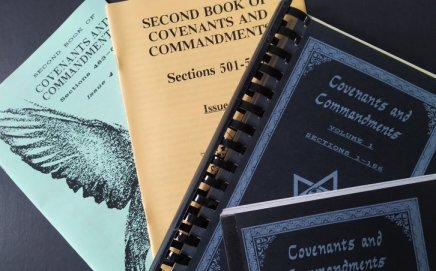 Some of the earliest publications of the revelations
Some of the earliest publications of the revelations
The Need for Standardisation
With such a diverse collection of revelations in circulation, and some of them either loosely translated or unauthorised, it was realised by 1996 that standardisation was of paramount importance to determine which revelations would be considered binding on the membership and to preclude the circulation of unauthorised translations.
The Olive Branch Selection Committee
Accordingly a committee was set up consisting of six senior members of the existing Norwegian congregations. This was presided over by the Pastor and Pastress of the Bergen Assembly, Gunnar Mjøsvik and Aslaug Hagen Mjøsvik (now deceased), two evangelists (the author of the major part of the revelations and Herman Rustad of Oslo) and two secretaries, the senior of the two being Kari Enger of Oslo.
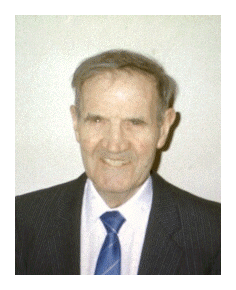
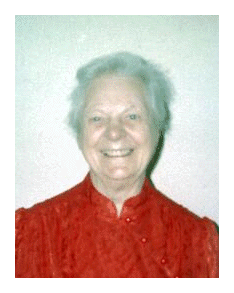 The President and Vice-President of the Revelations Committee,
The President and Vice-President of the Revelations Committee,
Gunnar & Aslaug Mjølsvik
The Selection of Revelations
The 700+ revelations were painstakingly translated into Norwegian, most of them orally, and carefully and prayerfully examined over the course of nine meetings between 18 February and 19 May 1996. Some containing multiple, unrelated topics were broken up into parts and the parts considered individually. Ten criteria for acceptance or rejection were established in the Mandate of the Revelations Committee (Olive Branch, p.xix-xx). The decisions reached, and why, may be read in the Committee Report available to Priesthood members at NCAY headquarters. Only those revelations receiving a unanimous vote of the Committee were admitted into the new Olive Branch.
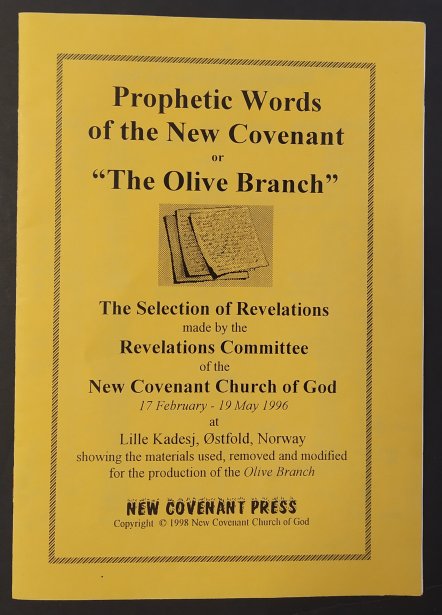
Revelations Excluded
The unincorporated revelations were ordered archived for use by the Chavurat Bekorot. Three main reasons were given for their exclusion. They were:
- 1. Spiritually too deep for public consumption;
- 2. Contained information about individuals too personal for public viewing; or
- 3. Uninspired, consisting merely of opinion.
The few addressed to individuals that were included, because of their important doctrinal content, were done so either with their permission and blessing or were anonymised by assigning pseudonyms to the recipients (like Section 8 to 'Horon').
Three Divisions of the Olive Branch
The Olive Branch is divided into 3 volumes or 'books' comprising Sections 1-171 (1C&C, 1984-90), 272-348 (2C&C, 1990-2) and 349-470 (3C&C, 1992-7), respectively, corresponding to three phases of the early ministry. An unknown number of revelations, visions and prophecies exist from the period 1997 to the present that are scattered through sermons on the main website (see especially the Revelation, Dreams & Prophecy page) or are recorded elsewhere. Some have never been written down. No plans to collect and collate these currently exists.
A Future Volume of the Revelations
Thus the collection of revelations under study is based on the decision of a Committee using criteria established by that committee. The assembly of the Bible canon proceeded in a similar manner though over a much longer period of time. How useful this collection will be in the future cannot be said. A vision does exist in which the number of revelations was parred down to the size of a slim paperback volume that would be published in the future, about a third of the size of the existing volume, presumably containing the most important revelations for the Final Gathering and Last Exodus. We therefore assume that the Olive Branch revelations will survive, in one form or another, to be of value to future generations.
Introduction to the Commentary
Consulting the Revelators
Commentaries on revelations are best made by the revelators themselves and those directly connected with the events surrounding those revelations both before, during, and over the long haul.
The Setting
No writing such as the Olive Branch arises in a vacuum. It's setting is Oxford of the 1980's and Oslo of the 1990's. The prevailing philosophy of the time is modernism with postmodernism beginning to make its presence felt in society. Christianity has been in steady decline since the 1960's and those revolutionaries who initiated the 'hippie' movement of that time are now gaining the upper hand in the social institutions and in government. Liberalism has undermined the traditional churches everywhere and state churches are starting down the road of de-institutionalision in Scandinavia, starting with Sweden in 2000. Society is becoming more secular, more socialistic and more globalist, and ever more hostile to Christianity. There is a systematic dechristianisation of formerly Christian nations.
Potted History of the Author's Life
The principle revelator, Christopher C. Warren (Lev-Tsiyon) is born and raised in the Far East (Singapore and Malaysia, respectively) at the very end of the colonial era. His world view is British, Asian, conservative, multi-racial and family-oriented with a strong work ethic. Born to parents in their early 40's, he is surrounded by adults whose experience in some cases stretches all the way back to the Victorian era and lived through two world wars. His childhood is spent hearing stories of their exploits and experiences. Father served in the RAF and mother in the WVS. He is educated at British boarding schools in Surrey (aged 10-19) and then goes to Oxford University to study Biochemistry in the 1970's. Get's an MA, becomes a private tutor, starts and runs a tutorial college in Oxford, trains to be a Systems Analyst, and continues as an educator in Norway upon relocation. Retires in the late 1990's owing to illness and devotes himself fulltime in his 50's to the ministry.
Religious Exposure
Exposed to the principle religions of Malaysia (Islam, Hinduism, Buddhism, Sikhism and Christianity), he is raised a nominal Christian in the Anglican tradition. Principle Bible exposure is to the King James Version (KJV) and latterly (in his teens) to the New English Bible (NEB) and the J.B.Phillips translation of the New Testament which were used in Divinity classes at school.
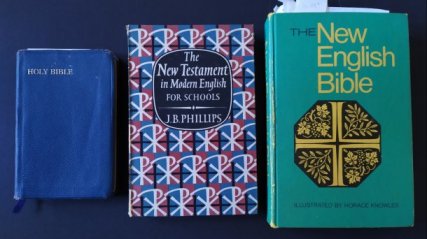 The revelator's first Bibles - KJV (1963) which he read from
The revelator's first Bibles - KJV (1963) which he read from
cover to cover when he was 11, the JBP and NEB which he
studied at school in the late 1960's and early 1970's
After a period as an atheist and evolutionary Darwinist in his teens, becomes a believer as a student in 1977 and is associated with a number of churches - principally Restorationist and Baptist - and then becomes an independent in the mid 1980's which is where the Olive Branch begins. During this time he studies and qualifies with a Grade A for the British General Certificate of Education in Religious Studies and thereafter specialises in teaching the Pre-Monarchic (Patriarchal) period of the Tanakh (Old Testament) and the Johannine Writings (John, 1-3 John) to students between 1982 and 1983. These essays are amongst his oldest theological writings. Two samples may be seen from the course notes he created (1, 2).
How the Work Began and Came to Scandinavia
He is called by revelation to establish a new community in 1984 which is finally organised in 1986/7. For a detailed account of his life up to 1991, written in immediate post-Soviet Ukraine where he was a missionary, see A Glimpse into Heaven. The first members of the new community (the Restoration Christian Fellowship) are two families from Oxford. Interest in Norway is sparked by his Norwegian wife's contacts. The first to join are from his wife's home town of Stavanger and her university town of Bergen. These visit Oxford in turn and become the first converts in Scandinavia. Later others will join from Oslo and elsewhere in the country. The author relocates to Norway in the autumn (fall) of 1988 in response to a vision showing a bridge between England and Norway and him crossing over on it.
The Revelations in Sermons and Articles
Though a number of sections of the Olive Branch appear occasionally in sermons and articles, sometimes with detailed explanations, they are relatively few. Though these printed materials often give a context and exegesis, they are sparse in number. As context is everything, it was felt that a Commentary was urgently called for before the revelators themselves pass on and readers are forced to rely on second-hand sources, some of which which may not always be reliable or even biased as every new work of Elohim (God) has its detractors.
Providing Historical Background to the Revelations
Obviously every Commentary has biases, particularly when a revelator, for whom inspiration is personal, is describing revelation as it passes through his own human filter of experience, hopes and expectations. Where he can be the most helpful is in giving historical background - where the revelation took place, what motivated it (answer to prayer, out-of-the-blue inspiration, requests for guidance on a particular matter from others, questions arising from Bible study, etc.). The introduction to each revelation tries to give some useful background and a summary of its content but sometimes more is required.
The Usefulness of Commentaries
As mentioned earlier, some of the original revelations have been broken up, and one or two even fused together because they're talking about the same subject (though this is rarer). These occurences are usually explained in the headings. This is not an uncommon practice in the Bible with, for example, Ezekiel's twelve prophecies being fused together (typically out of order for some unknown reason - see The 12 Scrolls of Ezekiel). But perhaps the most useful and interesting of all is the revelator interpreting his own revelations particularly as they are written in a form of English unfamiliar to all but those conversant in the King James Version of the Bible. Modern renditions of the revelations exist in some sermons and articles which give clarity to archaic Jacobean words and turns of expression. Though the revelations themselves often contain clarifying words in ({[parenthesis]}) that were not an original part of the revelation (à la Amplified Bible), along with Scripture references to familiar phrases in the Bible which can then be checked up in more modern versions, further explanation can be helpful especially when it comes to allegories and metaphors.
When Revelations are Misunderstood
Olive Branch revelations in the past have sometimes been misinterpreted requiring either further revelation or explanations by the revelators. One example of this was a misunderstanding in the popular New Olive Leaf revelations (Sections 44, 99 & 214) which are amongst the deepest and most profound of the revelations, reflecting, in many respects, the more esoteric, mystical style of writing of the Apostle John. Section 99 (New Olive Leaf II) was received in response to a misunderstanding of Section 44 (New Olive Leaf I).
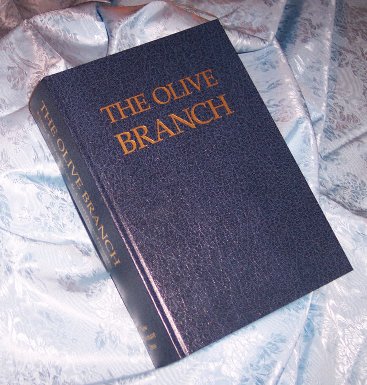
An Example of the Work Done by the Revelations Committee
Because these revelations are extremely deep, the Revelations Committee debated long and hard whether to incorporate them into the Olive Branch or not. It was finally decided that though these really belonged in the Chavurat Bekorot (Holy Order) collections, where the Melchizedek Patriarchs and Matriarchs (Apostles) are trained, it was right to include a number of firstborn 'appetisers' to give readers of the Olive Branch some idea of what was discussed and shared out of the public gaze both to alleviate curiosity and to draw in those of the Remnant. These particular revelations are collectively known as the Firstborn Seal (FBS) or Other Covenants & Commandments (OCC). Only one of these has ever been released to the public. Why have a non-public collection of revelations? Commonly because they are the most easily misunderstood (and consequently open to abuse) and are solely for the training of the Melchizedek Priesthood.
For the Final Gathering
The New Olive Leaf revelations illustrate the thinking processes that talmidim (disciples) must be trained to go through in order to maximise the benefits of these Johannine-type revelations for spiritual development for the end time gathering of the 12 Tribes.
Johannine-Type Mystical Language
The need for such a kind of revelation may baffle those of a more literalist disposition who forget (or don't otherwise know) that the Apostle John, for example, wrote for a diverse audience of readers in the Gentile world which then was saturated with the occult teaching of the Epicureans, Stoics and various Gnostic cults that had infiltrated Christianity - the believers trapped in that antichrist system (Gnostic Christians) needed rescuing. Presenting the Besorah (Gospel) so that it can be understood by those with a particular non-Hebraic mindset, who are familiar only with certain kinds of religious words and concepts outside the Israelite tradition (like the Greek notion of 'Logos', masterfully co-opted by John in his Gospel), becomes important to us too given the hyper-occultisation of the world in which we now live. The Gospel of John is not, of course, occultic, any more than the deeper revelations of the Olive Branch are. Rather, they serve a purpose in enhancing evangelism by sometimes using the mystical language of these people. Such revelations as the New Olive Leaf have been instrumental in leading people out of the New Age and Freemasonry (for example), where such language abounds, and into the Besorah (Gospel).
Dealing With Cessationism and Ultra-Continuationists
The Olive Branch does, of course, have its critics, particularly amongst cessationists who believe that the kind of revelation or prophecy that characterised the New Testment witness died out with John, the last of the apostles. At the other extreme are the ultra-charismatic continuationists for whom modern revelation can sometimes be more important than the older, more tested, revelation, namely, the Bible. Such are possessed of "itching ears" (2 Tim.4:3) and like the ancient Greeks whom Paul had to contend with, are ever searching out something 'new' and 'exciting'. The modern equivalents appear to reflexly go seeking out people who seem to be 'prophets' but they are never satiated, for whom 'getting new revelations' becomes an addiction of sorts, something that happened in NCAY at the beginning for a while (see OB 44:6).
Diminished Importance of the Olive Branch in the Interim Period
Messianic Evangelicals, though continuationists, take a moderate position, having experience of such difficulties with people constantly out to hear something new and titillating. Revelations are not given to consume upon the lusts of man but to illuminate the already revealed Way of Christ more so that the Messianic lifestyle can be lived more successfully. The 'old paths' are as important as the 'new', if not more so, a reason, perhaps, why after the completion of the Olive Branch Yahweh caused those like the revelator, immersed as he was in the stream of revelation in NCAY, to speak less of revelations than before. Those coming to this work only in search of novelty with which to be tickled soon went elsewhere when they were confronted with the challenge to become more sacrificial talmidim (disciples) and serious Bible students. We have always insisted that believers make the Bible their foundation, even in the earliest days. Revelation still very much characterises NCAY though it is not spoken of nearly as much as it was in the late 20th century, a reason, perhaps there has been no talk of an Olive Branch Volume II. There simply hasn't been a need for it.
The Need for the Olive Branch Today: 2020 and Onwards
All of that seems to be changing as we enter into a season of judgment, a major drop in the standard of living, and increasing political chaos in the world. Revelations like the Olive Branch have suddenly become more important again, not only because a clear prophetic voice is needed, one that has been consistent over 40 years with numerous fulfilled prophecies, but because the things the Olive Branch speaks of quite emphatically - the need for the restoration of the Melchizedek Priesthood and Chavurat Bekorot or Holy Order - are needed now more than ever. Hence the Olive Branch is undergoing a cosmetic upgrade and a commentary is being written explaining it more clearly. With the an Æon or Age clearly coming to an end at Shemini Atseret in 2020, it's most definitely the time.


This page was first created on 11 October 2020
Last updated on 20 October 2020
Copyright © 1986-2020 NCAY - All Rights Reserved


